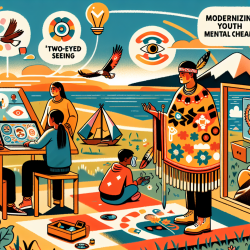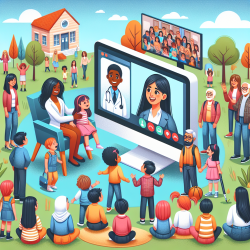Introduction
In the realm of youth mental healthcare, the collaboration between Eskasoni First Nation and the ACCESS Open Minds (OM) project stands as a beacon of transformative practice. This partnership exemplifies how integrating Indigenous and Western methodologies can create a robust framework for mental health services tailored to the unique needs of a community. The research article titled "Eskasoni First Nation's transformation of youth mental healthcare" provides valuable insights into this innovative approach.
Understanding the Two-Eyed Seeing Approach
Central to the success of the Eskasoni initiative is the "Two-Eyed Seeing" approach. This methodology, which combines Indigenous and Western perspectives, allows for a more holistic understanding of mental health. By respecting Mi'kmaq traditions and integrating Western practices, the Eskasoni team has created a model that is both culturally sensitive and effective in addressing the mental health needs of their youth.
Key Outcomes and Their Implications
The implementation of the ACCESS OM objectives in Eskasoni has led to several noteworthy outcomes:
- Early Identification: The initiative emphasizes the importance of early identification of mental health issues, allowing for timely intervention.
- Rapid Access: By providing barrier-free access to mental health services, the project ensures that youth can receive help when they need it most.
- Appropriate Care: Youth are given the choice between Western and Indigenous methods of care, ensuring that treatment is tailored to individual preferences and needs.
- Community Engagement: The involvement of youth and their families in the design and delivery of services fosters a sense of ownership and relevance.
Implications for Practitioners
For practitioners looking to improve their skills and outcomes, the Eskasoni model offers several lessons:
- Embrace Cultural Competency: Understanding and integrating cultural contexts can enhance the effectiveness of mental health services.
- Prioritize Community Involvement: Engaging the community in the design and implementation of services can lead to more sustainable and impactful outcomes.
- Adopt a Holistic Approach: Consider the emotional, spiritual, physical, and mental aspects of well-being in treatment plans.
Encouraging Further Research
The success of the Eskasoni initiative underscores the need for further research into culturally integrated mental health models. Practitioners are encouraged to explore how these principles can be adapted to other communities, particularly those with diverse cultural backgrounds.
Conclusion
The transformation of youth mental healthcare in Eskasoni First Nation serves as a powerful example of how culturally informed practices can lead to better health outcomes. By embracing both Indigenous and Western perspectives, the community has created a model that is both effective and respectful of its cultural heritage.
To read the original research paper, please follow this link: Eskasoni First Nation's transformation of youth mental healthcare: Partnership between a Mi'kmaq community and the ACCESS Open Minds research project in implementing innovative practice and service evaluation.










